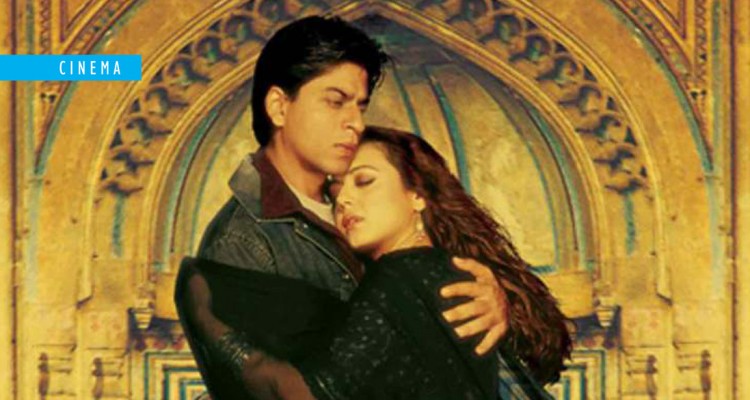Amit Ranjan would like to see the love affairs between India and Pakistan on reel translated into real life
In 2013, the Hindi film industry, popularly known as Bollywood, celebrated its centenary. In its hundred year, Pakistan has played a role of a supportive pillion to Bollywood.
Many actors migrated, due to Partition related violence, or came in search of work from the other side of border to Bombay (now Mumbai). They laid the foundation stone of Bollywood. Since 1947, Pakistan has provided a market to Hindi films and television serials. On screen as well, this country acts as the ‘alien other’ against which ideas of political nationalism is constructed.
Tracing the relationship between Bollywood and Pakistan, Waseem Altaf in Viewpoint writes, when Master Vithal, the leading actor of India’s first talkie film Alam Ara, was sued by another film company for violating terms of contract, an eminent Bombay lawyer defended him and won the case. The lawyer was, Qaid-e-Azam, Mohammad Ali Jinnah. In pre-partition years, Lahore was emerging as another centre of cinema, but the film industry could not flourish because most of those engaged in it were Hindus, who, due to violence in 1940s, migrated to Bombay.
Among those who fied from Lahore to Mumbai were Roshan Lal Shorey and Roop Kishore Shorey. Dalsukh Pancholi and Pran are the other prominent names. As migration took place from both sides, Sadat Hasan Manto and Nazir migrated to Pakistan from Bombay. Prithvi Raj Kapoor, Yash Raj Chopra, Dev Anand, and Sunil Dutt are originally from Pakistan. They achieved fame but could not overcome their nostalgia for their native place. Ananya Jahanara Kabir in Partition’s Post-Amnesias writes that this is a powerful motor of affect. Ishtiaq Ahmed in, The Punjab Bloodied, Partition, Cleansed has explored this affective side of some Lahoris in Bollywood.
50th Anniversary
Their love for their native place is cited by Bhaskar Sarkar, in his book Mourning The Nation: Indian Cinema in the Wake of Partition. In April 1997, on the occasion of the 50th anniversary of Partition, a reunion of transplants from Lahore was organised in Bombay. The participant’s mood was reflected in the repeated recitation of a saying from the late 1940s that expressed the feelings of loss and longing by those who have roamed the lanes of Delhi and Indore without forgetting the lanes of Lahore:
Bahut ghumi hain Dilli aur Indore ki galiyan/
Na bhule hain, na bhulenge, Lahore ki galiyon
Due to shared socio-cultural values Bollywood has always enjoyed an effective presence in Pakistan despite the ban between 1965 and 2008.
Pakeezah
Raza Rumi writes that Doordarshan (India’s national television channel) was viewed with much fascination in Pakistan. When the film Pakeezah was shown on TV, nobody was found on the streets of Lahore.
Pirated Video Cassette were found in almost all affluent middle class wardrobes. Describing the craze for Hindi films, M.K. Kao in his book, An Outsider, Everywhere recalls that during the Simla talks between Mrs Indira Gandhi and Z.A. Bhutto in 1972, a special screening of Pakeezha was arranged by Mrs. Gandhi’s special secretary in Simla’s Ritz theatre for Benazir Bhutto who had accompanied her father to Simla.
General Zia, who institutionalized the process of Islamisation in Pakistan, was such an admirer of Hindi films that during his daughter’s marriage the only invitee from India was actor Shatrughan Sinha, now a Member of Parliament. In 1998 Pakistan conferred highest civilian award Nishan-e- Imtiaz to mega star of Hindi cinema -Dilip Kumar, who was born in Peshawar.
The craze for Indian movies and television serials is not limited to the affluent class but also engrosses the poor and marginalised. Shanaz Khan quotes 18-year-old Samina married to a sweeper: “Films show a world of beautiful people who love each other and it takes me away from the hardship of my life. I like the happy stories best.”
A four-decade-old blanket ban on screening Hindi cinema in Pakistan was lifted in 2008. Interestingly, the first Hindi film chosen for release in Pakistan after the ban was Jodha Akbar that shows Mughal Emperor Akbar’s interest in Hinduism.
Alien Other
Despite this symbiosis, Pakistan remains an alien ‘other’ for Bollywood. According to Professor Nirmal Kumar, Pakistan became a subject in Bollywood in 1973 when Chetan Anand’s Hindustan ki Kasam was released. The militancy in Kashmir valley in the 1990s, affected the ‘nationalist’ (middle) class that turned anti- Pakistan and Pakistan-bashing films flourished in Bollwood. This theme exacerbated after the 11 September 2001 attack, in New York, by Al-Qaida operatives.
In response, Ghazi Ilam-ud-Din Shaheed (2002) and Waar (2013) (allegedly, funded by the Inter-Service Public Relations) were made in Pakistan. From time to time, Bollywood too has reflected the political relationship between India and Pakistan with movies heralding a message of peace or based on a love affair between two individuals from the two countries.
In most such movies, the patriarchal interest of the state is not disturbed. Zindagi Gulzar Hai, the first Pakistani work showing on an Indian channel, reflects the current political engagement between the two countries. Besides many progressive movies, narrating the depth of India-Pakistan relations, have been made by Deepa Mehta, Ajay Bhardwaj, and Mehreen Jabbar but that have failed to occupy a wider socio-political space.
To conclude, cinema is not only a source of entertainment but also a medium of political communication and Bollywood is no different. It is a channel of great communication and constantly reflects the political relationship between India and Pakistan.
The writer is a Delhi-based expert on foreign affairs

